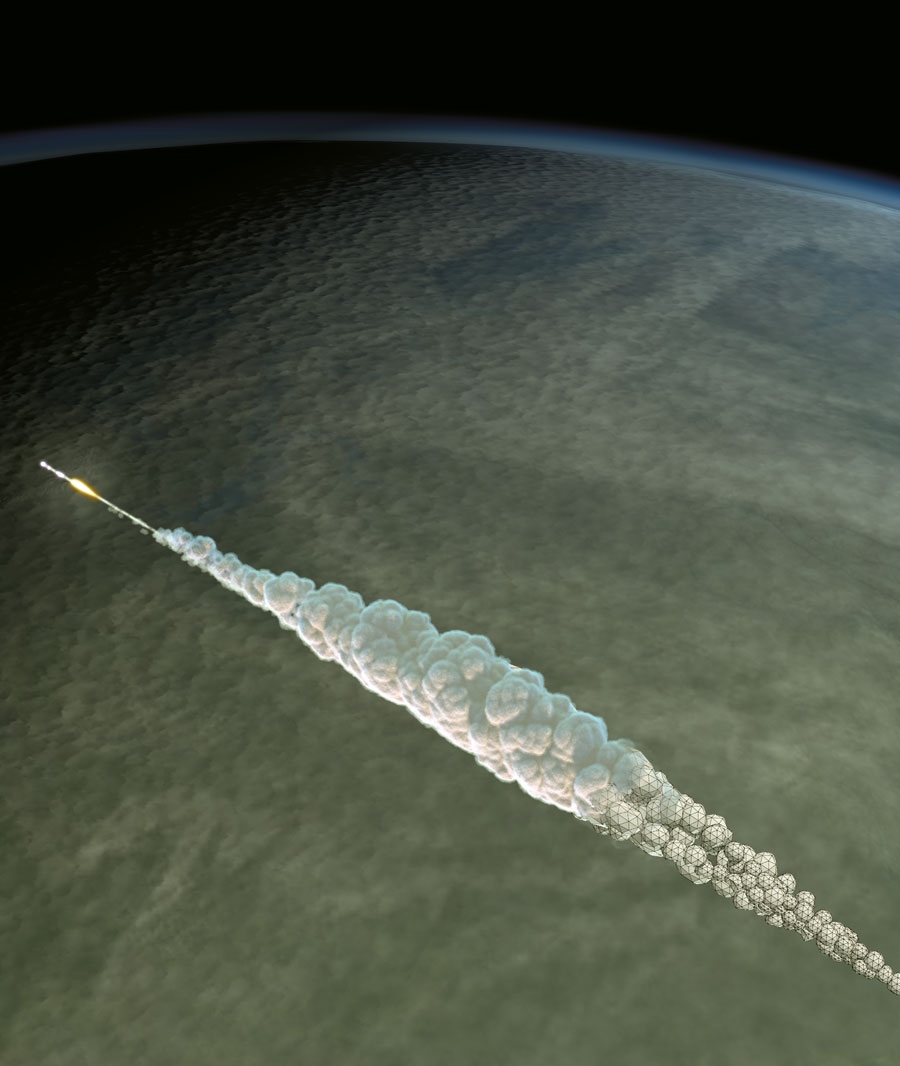Scientists reconstructed the properties and the trajectory of the meteor which exploded above Russia earlier this year. These blasts are not as rare as previously thought.
The explosion was impressive. Video’s shown on television on February 15 2013 didn’t leave any room for doubt. But how big was it really? As soon as Dr. LäsloEvers had heard on the news that a meteor had exploded near the Russian town of Chelyabinsk he logged into the infrasound measuring station in Kazakhstan. He couldn’t believe what he saw. The station registered a signal with a frequency of no more than 0,02 Hertz; a pitch a hundred times lower than the rumbles measured in the ground during an average volcano eruption. Evers started calling colleagues.
The seismologist who works at the CEG faculty and the Royal Netherlands Meteorological Institute KNMI was looking at the sound registration of the largest meteor explosion to occur on earth since 1908. When the rock blasted to smithereens the detonation was the equivalent to an exploding 500 kilotons of TNT. Or so can be read in three articles – two in Nature and one in Science – published online last week. The articles describe in minute detail the events and characterize the meteor and its origin.
Evers is co-author of two of these articles which came about through collaboration of dozens of research groups from around the world. “Sure we drank champagne at my house”, he says. “I hadn’t published in these magazines before and suddenly, within one week time, I have a publication in each one of them.”
In the Science article the research group, lead by Nasa, describes the shockwaves that occurred when the meteor roared through the atmosphere and during the explosion. The asteroid flew through Earth’s upper atmosphere at an initial speed of around 19 kilometers per second, more than 50 times the speed of sound. It broke into pieces at an altitude of between 45 and 30 kilometers and finally burst into gas and dust at around 27 kilometers altitude.
The researchers, who used data from field sensors of the International Monitoring System which survey the international ban on nuclear tests, also calculated that the meteor must have weighed 12 to 13 thousand metric tones. This is a couple of thousand tones more than Nasa estimated earlier.
In an article in Nature which appeared online the day before another group of researchers, amongst whom Evers and his colleague Ir. Pieter Smets of the CEG faculty presented alarming news. The group had calculated that the risk of meteors the size of the Chelyabinskrock hitting the earth could very well be more than twice as big as previously assumed. They hit earth once every forty years on average instead of once every hundred years.
Researchers from the Czech republic and Canada also had interesting news. They traced back the origin of the rock to an orbit that must have resembled that of a much larger, 2 kilometre body, known as asteroid 86039, first observed in 1999. The two bodies may once have been part of the same object.
These researchers must secretly have blessed the perilous drinking habits of Russian drivers. Their research published in Nature is mainly based on video’s of the meteor found on You Tube. Many Russians have video camera installed in their car that must prove their innocence if they get involved in a car crash. As a result the asteroid that exploded on February 15 near Chelyabinsk was filmed by countless cameras.
Borovicka, J. et al. The trajectory, structure and origin of the Chelyabinsk asteroidal impactor, Nature 2013
Popova, O. P. et al. Chelyabinsk airburst, damage assessment, meteorite recovery, and characterization, Science 2013
Brown, P. G. et al. A 500-kiloton airburst over Chelyabinsk and an enhanced hazard from small impactors, Nature 2013



Comments are closed.